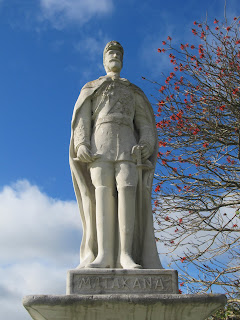Embarking with the Main Body from Port Chalmers were eight young men from Queenstown who had all volunteered to take part in what they thought would be their 'great adventure'. Sadly those eight men never returned to the beauty of Queenstown perishing at Gallipoli in 1915.
Private William Black killed in action on 26 April 1915, remembered at the Lone Pine Memorial.
Private Wilfrid Jack Bunting received a gunshot wound to stomach on 3 May 1915, died of his wounds at sea on 5 May 1915, aged 19. Buried at sea and remembered on the Lone Pine Memorial.
Private Robert Sampson Chapman killed in action sometime between 2 May 1915 - 23 May 1915, aged 21, remembered at Lone Pine Memorial.
Private James Mulholland killed in action 2 May 1915, aged 24, remembered at Lone Pine Memorial
Trooper Charles Birse died of wounds at sea from Gallipoli on 8 August 1915, aged 24, buried at sea, remembered at Lone Pine Memorial.
Private William Henry Cable killed in action on 16 June 1915, aged 25, remembered at Shrapnel Valley Cemetery.
Private Ernest Cable (brother of the above) killed in action 26 April 1915, aged 20, remembered at Lone Pine Memorial.
Lieutenant Walter Michael Mackenzie killed in action on 9 August 1915, aged 25, remembered at Chunuk Bair (NZ) Memorial.
(Private Ernest Cable is not on the Queenstown Memorial)
While researching this blog entry I read from Maurice Shadbolt's book 'Voices from Gallipoli' the memories of George Skerret a member of the Otago Battalion and the NZ Medical Corp, his description of the horrors he witnessed at Gallipoli were difficult to read. He especially supported the view that the Otago Battalion was
"...the bad luck battalion. We were, we really were.". The list above certainly supports that view.

























